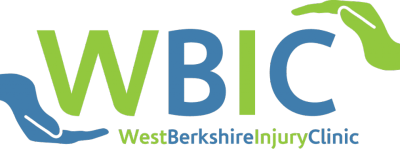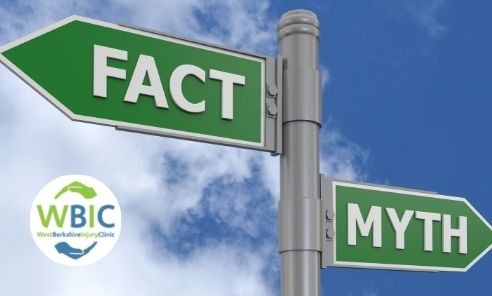There are a lot of myths about both Osteopathy, Soft Tissue Therapy and Sports Therapy which I’m hoping to address. These are just an example of some of the common ones.
Sports Massage Myths
Myth 1 – Sports massage HAS to hurt to be effective
This is not true and in fact if it hurts then quite often the treatment is less ineffective and if extreme can be counter productive. Any treatment has to be adjusted to the requirement of each individual patient. Yes! Sports Massage and related treatment can be uncomfortable but it shouldn’t hurt. The common rule is that the client should mostly feel that the massage pressure is tolerable. Some people either with a high pain threshold or with healthy muscle tissue may not feel any pain or discomfort at all during treatment. This doesn’t mean that their treatment is less effective than others.
Myth 2 – Sports massage releases ‘toxins’
This is a popular myth. Lots of therapists tell their clients that they are ‘releasing toxins’ from the muscles, without really knowing what this means or even what ‘toxins’ are. The National Center for Complementary and Alternative Medicine have conducted multiple studies on the effects of massage on the body and none of these show any relation to a release of toxins.
Myth 3 – You must drink LOADS of water post-massage
Linked to the last myth, therapists who tell you that they have ‘released toxins’ from your muscles, will usually follow this with advise of drinking ‘plenty of water’ to ‘flush out the toxins’. Despite common misconception, massage does not increase your body’s need for water at all. That being said, you should always drink to thirst and sip water throughout the day to ensure that you stay hydrated and maintain healthy organs.
Sports Therapy Myths
Myth 4 – Sports Therapy is just Sports Massage with a bit added on
This isn’t the case. Sports Therapy overs a number of things as well as Sports Massage however Sports Massage is an integral part of the training of a Sports Therapist. The training covers a number of other things including rehabilitation and differential diagnosis. Always challenge your Sports Therapist and they should be able to explain this in more detail.
Osteopathy Myths
Myth 5 – Osteopathy is just about the bones
There’s a good reason why many people think osteopathy is only about treating bones, after all, the word osteo stems from the Greek word for bones. While the roots of osteopathy are based in helping people with bone complaints, these days, osteopaths treat all the body systems, including the joints and muscles.
Myth 6 – Osteopathy is just for backs
Many people wrongly assume that an osteopath only focuses on treating those with back troubles. Although many osteopaths do see a lot of people who experience aches and pains in the back, the scope of their work is much wider than this. An osteopath can treat pain in any part of the body and may help with multiple issues including headaches, ankle injuries, tennis elbow, pregnancy problems and sports injuries.
Myth 7 – Osteopathy is a newfangled treatment
Contrary to what some people believe, osteopathy is not a new treatment. It has been around since 1874 when it was first described by Dr Andrew Still.
Osteopathy is based on scientific principles and is highly regulated. It can take four years of full-time training to become a qualified osteopath with continual development every year.
Genral Myths
Myth 8 -You shouldn’t question your therapist as they are the expert
All therapists want you to question them and any therapist should explain why they are doing something and the benefits. As has been said by others a good therapist will leave their ego at the door and want their client to feel confident and comfortable.
Find out more..
Find out more about the Sports Massage, Sport Therapy and Osteopathy service we offer by calling 01635 904542
—oOo—

